The littlest violinists had waited a long time for their stage debut, when at last they could flourish their bows just as their teachers did: up, down, out in front, sideways, up, down, on their heads.
On their heads? Yes, and this mop top maneuver in the copycat bow exercises always brings a wave of charmed laughter from the littlest violinists’ parents, those first-timers at the annual winter concert of the All-Island Elementary String Program. Unlike the other parents and grandparents, some of whom have been coming for years to hear Hot Cross Buns as well as their child’s latest orchestral achievements, the newbie parents don’t know the silly bow positions are coming. It’s always excellent comic relief, involuntarily supplied by the kids to parents not sure what to expect after hearing a lot of plink-plink-scratch in practice.
But as the pioneer of this music method, Shin’ichi Suzuki, reminded us, teaching music is about developing a beautiful heart. And there were very full hearts, pulsing like the myriad camera flashes, filling the Performing Arts Center a week ago Thursday.
A record number of strings players lined the stage, in a year when the program might have been stunted but for a budget battle in which music educators and parents prevailed.
More than 200 strings students were invited on stage by the maestro not only of the music but of the logistics, Nancy Jephcote. Actually, she and Chelsea Pennebaker. It was Ms. Jephcote’s 10th year in the public schools, making a score of concerts (there is an annual spring concert as well) for her, but this was one of the more challenging years, she said.
“Like most teachers, we are doing more with less, but our loaves and fishes were really made manifest this year,” she said. The overwhelming demand from new and returning players (violin, viola, cello, double bass) means the schedule is not ideal for the kids, some lesson groups are too big, some have mixed levels of ability. Add to that, Ms. Jephcote suffered the full effects of a tick bite around Thanksgiving and was floored for the rest of the year. “We’ve really been slogging,” she said, with much praise for Ms. Pennebaker and accompanist Carol Loud.
She would not, however, want to leave out any child who wants to pick up an instrument. “Those little dumplings,” she sighed. She’s taught children with cochlear implants; a child with a prosthetic arm bowed in the front row last week. Ms. Jephcote believes that between the two of them, she and Ms. Pennebaker interact with a full quarter of the Island’s student population. Moreover, they have the students for years, unlike other teachers, “which means we sometimes see developments other teachers cannot, and we are able to advocate for the kids.”
It’s a sad time in education, she said, if anything that cannot be measured is threatened. She was particularly pleased to see the smallest children. Music, Ms. Jephcote said, is a language without words, and children are hard-wired to learn it young.
Those littlest players, she said, are not yet concerned with perfection, they are not yet overwhelmed with homework, they can have fun with limited objectives and enjoy simple routines. And some take to it like Shakespeare to a pen.
Thursday’s performance included a special concerto performed by Sam Graber-Hahn and Molly Healy.
The advanced orchestra opened the show with Entrance of the Queen of Sheba before hitting a groove with Wood Splitter Fanfare.
The intermediate orchestra played (and sang the notes of) Jingle Bells, as well as a Six Note Round.
As is the concert’s custom, all children are arranged (miraculously) on the stage, packed in, sitting cross-legged, as the main Suzuki program begins. A few players rise for the most challenging songs. The songs get relatively easier down the play list, with each song seeing more and more players popping up, more bows in sync (or not).
Finally always is the Twinkle Theme, variations on the Mozart tune. This time more than 800 strings rang out with it. Little stars, indeed.

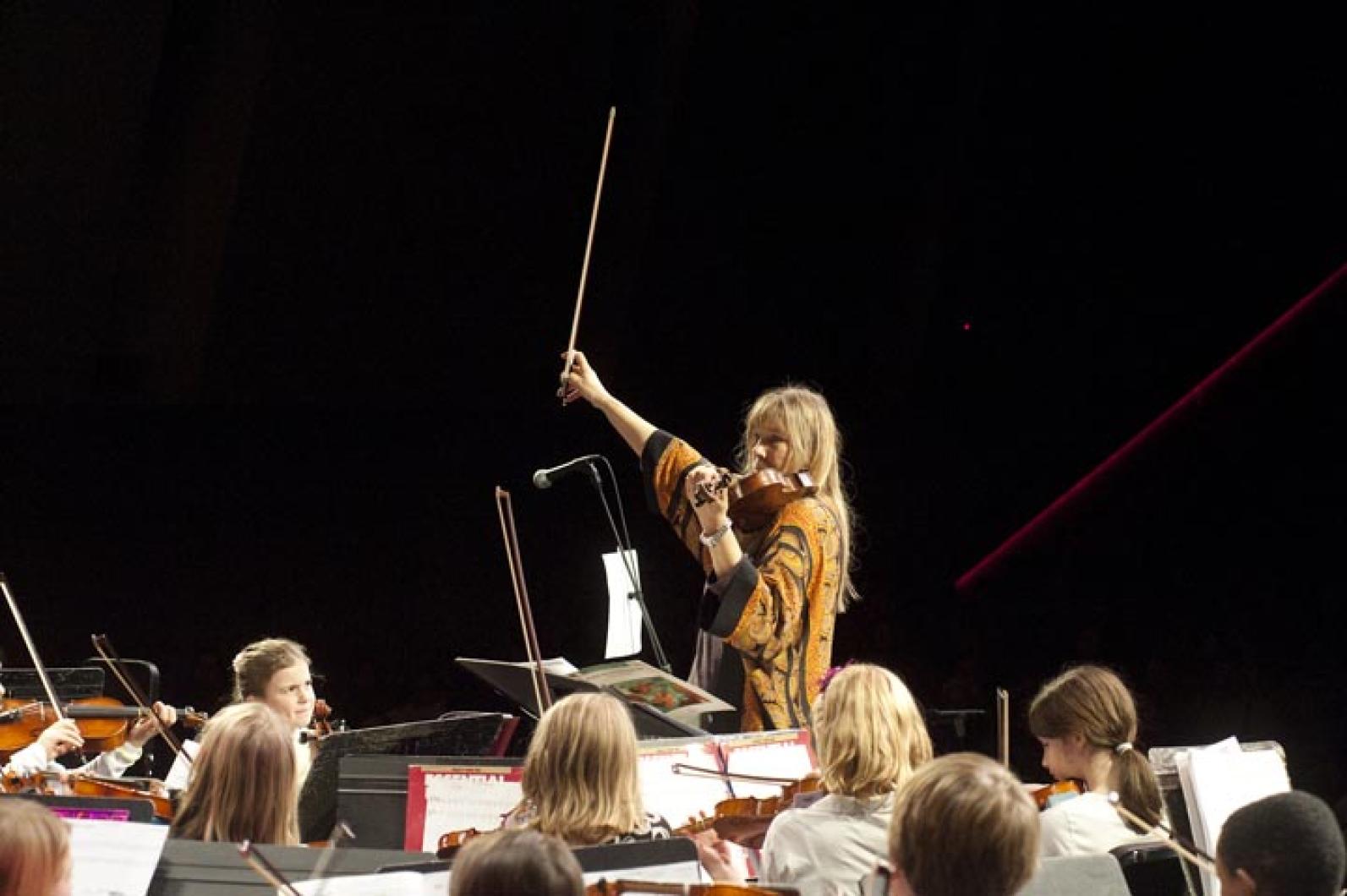
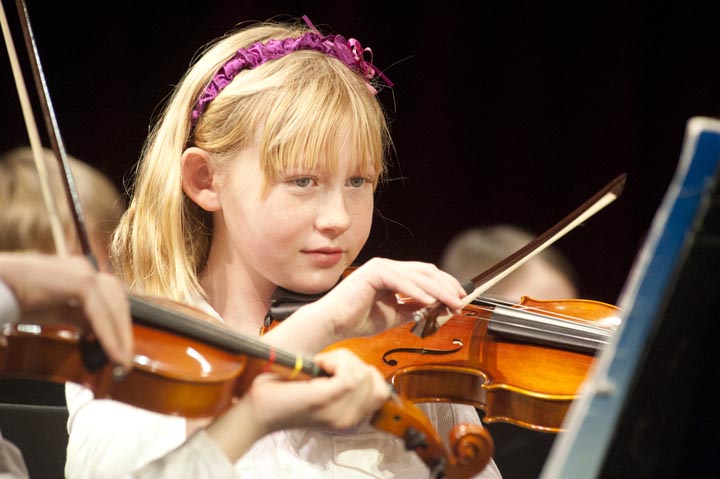
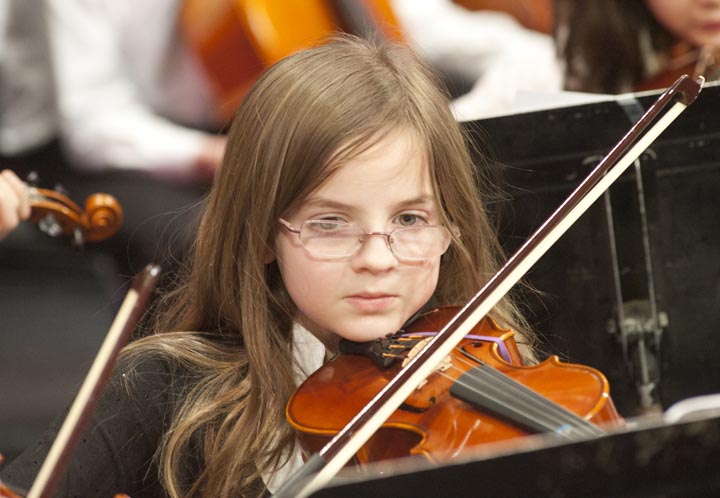

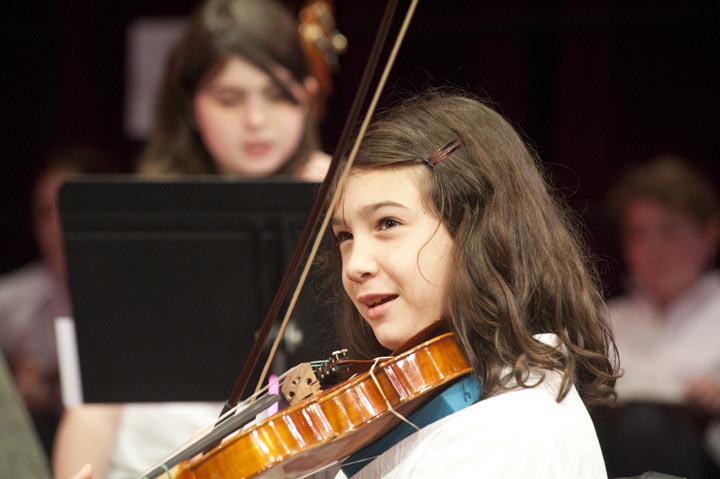
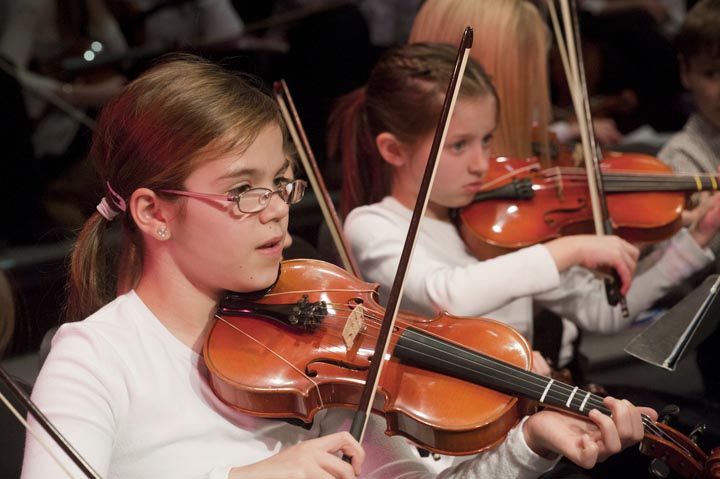





Comments
Comment policy »